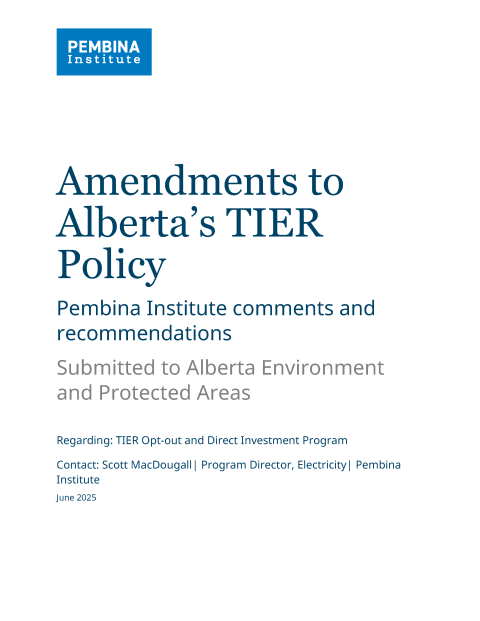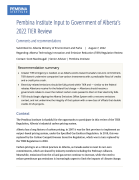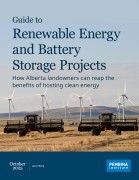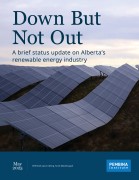The Pembina Institute welcomes the opportunity to provide input on adjustments to the Technology Innovation and Emissions Reduction (TIER) program, as this review comes at an important juncture. With several years of weakening credit prices, inadequate benchmarks set for the province’s highest emitters, and a continued oversupply of credits still on the horizon, there is an opportunity to re-commit TIER to the principles of good policy design.
It is well-established that good industrial pricing systems need a balanced credit market, where credits are valued near the headline carbon price, and that price trajectories and tightening rates are established in accordance with clear emissions reduction goals. Investors and stakeholders are looking for strong and consistent policy that incentivizes decarbonization, sees polluters paying instead of taxpayers, and drives innovation across all sectors of Alberta’s economy.
However, these proposed changes do exactly the opposite. They could allow large emitters to achieve compliance with uncertain emissions reduction outcomes; they could allow aggregated facilities to simply opt out of emissions management; and they significantly weaken the economic case for investment in major emissions reduction projects.
This approach is at odds with the stated goal to increase and diversify resource exports. Jurisdictions like the EU, U.K., Japan and South Korea are adding new requirements — including tariffs — for imports that surpass a certain emissions threshold, or that aren’t subject to a domestic carbon price. In this context, strengthened carbon pricing policy is a competitive advantage, and weakening it (as proposed) could limit the value of Alberta’s resources on the global market.
Current TIER issues
- TIER is currently experiencing a credit market crash, with the traded value of emissions offsets and emissions performance credits plummeting to less than half of the value of a TIER fund credit. The undervaluing of emissions credits is due to oversupply, weak benchmarking and weak tightening rates, as well as political uncertainty surrounding major changes in TIER’s core mechanisms (including proposals in this engagement).
- Compounding the undervaluing of credits, Alberta has frozen the fund price, stating this is to protect the competitiveness of industry. Crucially for Alberta, oversupply and policy uncertainty are undermining the business case for firms to make final investment decisions on low-carbon facilities and decarbonization initiatives, like carbon capture and storage projects. These initiatives are necessary to maintain Alberta’s competitiveness as customers grow increasingly concerned with the emissions footprint of products and major trading partners impose carbon border adjustments.
Proposed changes
Beyond the existing fund price freeze and credit oversupply, these proposals to add significant further flexibilities — and potentially allow double counting of emissions reductions through the direct investment compliance option — will further substantially weaken the system. On the specific proposals:
- Opt-out Provision: Aggregated facilities represent significant emissions in Alberta but have had limited compliance obligations, since their inclusion in TIER was largely to shelter these facilities from the federal fuel charge (at the cost of participating in the TIER reporting and verification system). Alberta must still address the emissions from this sector and should not permit sectors to opt out of emissions management without a strong alternative. Low-cost solutions for methane management are available, and should be incentivized by further strengthening Alberta’s existing methane regulations.
- Direct Investment Compliance Option: TIER does not need additional compliance flexibilities to incentivize project development, especially while credit prices are in a long-term crash. The core issues of stringency and policy certainty need more focus in TIER updates and cannot be solved through an upfront recognition of investment. We are also concerned that this option risks introducing double-counting. An investment in emissions reductions should not be rewarded with upfront investment recognition if it also generates performance credits when complete; this would continue to expand the oversupply issue and reduce the price signal for emission reduction projects.
Rather than further undermining the market by freezing the headline price and implementing new and uncertain compliance pathways, we recommend that the Government of Alberta commit to stabilizing the credit market and aligning the TIER system with clear and ambitious emissions reductions goals, for 2030 and beyond. Increasing the headline carbon price and annual tightening rates are key tools to making TIER work better, and incentivizing meaningful investment in decarbonization.







